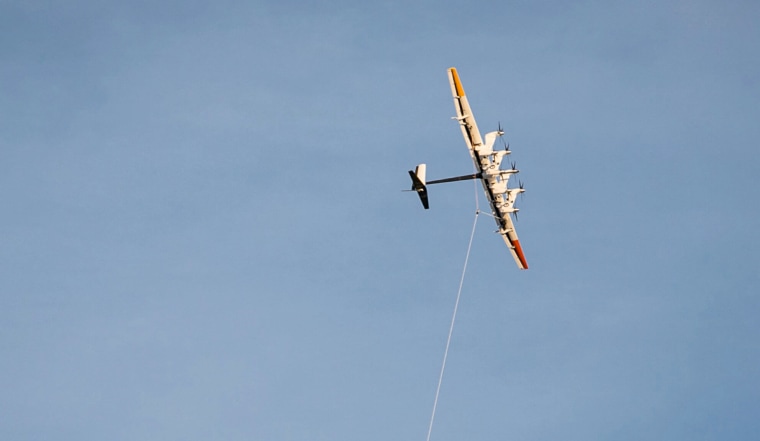
The physics of wind power favor two things: turbine size and wind strength. The bigger the turbine, and the stronger the wind, the more energy that can be harvested. Yet bigger is more expensive, and most of the priciest bits merely support the energy-generating blades themselves: the towers, nacelles, central hub, and the foundation. Given 80% of the energy comes from the outermost 30% of a blade, why not dispense with the most expensive parts?
If you did, you’d end up with something that looks like a kite. “Energy kites” are now inching their way to market. Google (now a subsidiary of Alphabet) purchased wind energy company Makani in 2013, and has worked for years designing flying kites as power plants (it’s testing in Hawaii right now). A second company, Minesto, is now making progress on harnessing energy in a different environment: seawater.
The Swedish company has gone through five prototypes since the idea was conceived in 2004. Minesto is now moving from prototypes to generating electricity. In August, sea trials showed how the wing performed in real-world conditions about eight kilometers off the coast of North Wales in the United Kingdom. By October, a utility-scale project had deployed a device capable of generating about 500KW of electricity. Minesto wants a fleet of more than a hundred these to supply 80 MW of capacity.
The physics of underwater kites are similar to those in the air. High-flying “wings” are tethered to the seabed with a cable. Each kite flies a massive figure eight pattern. As water flows over its 12-meter wingspan, the kite swoops through the current producing kinetic energy (movement). Turbines attached to the wing spin, converting this into electricity. As it “flies” at least 20 meters below the surface, the kite can move at several times the speed of the current. Flaps allow the wing to steer and achieve the best angle relative to the current.
So far, energy kite systems have yet to prove (pdf) themselves economical. Alphabet’s Makani is not yet generating commercial electricity with its airborne kites after a decade. A Canadian company, HydroRun Technologies, shut down in 2015 after failing to commercialize its own underwater systems. The barriers are formidable. Corrosive seawater is brutal on equipment. Swift currents are needed at suitable sites. Cheap electricity from solar, wind and natural gas is depressing prices.
But Minesto argues physics is on its side. Its wing design reportedly gives it the capacity to generate 216 times the power of a comparable stationary turbine. Even at low speeds, the company says it can tap tidal and current power in places where it’s too expensive or impractical to build conventional power generation. A 2017 paper in the journal Mechanical Engineering found underwater tethered kites could theoretically generate electricity slightly cheaper than today’s offshore wind turbines, and at half the current cost of today’s fixed turbines on the seafloor. If the economics pencil out, researchers estimate 100,000 underwater energy kites—less than half the number of wind turbines already in operation—could generate a theoretical maximum of 30 GW of power (although the actual electricity generated would be less).
Minesto announced a power purchase agreement with the Faroe Islands, an archipelago in the middle of the North Atlantic Ocean, to sell electricity generated with its technology this November. Minesto expects to install two of its 100-kilowatt models with a wing-span of up to 20 feet (six meters).
But they’ll have to move fast. The cost of solar and wind energy continues to fall. New energy kites are finding their old competition for the cheapest energy source (coal, gas, and nuclear power plants) are being replaced by their increasingly cheap renewable counterparts like solar panels and offshore wind turbines.






